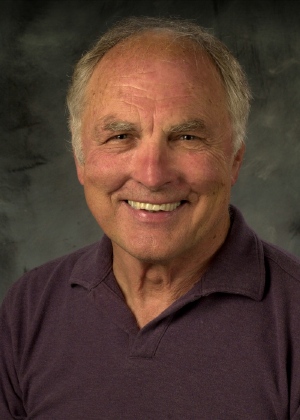Aug 13 2008
UC Santa Barbara Chemistry Professor Galen Stucky has been honored for his role in the development of a blood-clotting gauze that is helping save soldiers who suffer severe, life-threatening injuries in Iraq and Afghanistan.
 Galen Stucky
Galen Stucky
The Department of Defense's Advanced Technology Applications for Combat Casualty Care Award was presented to Stucky August 11 during the opening ceremonies of the group's annual meeting in Florida. The ATACCC convention is the premier scientific meeting on the battlefield medical needs of the nation's soldiers and on recent advances in trauma surgery and medicine.
"I am very honored," said Stucky of the ATACCC award. "In retrospect, this project has meant more to me than any other that I've worked on for the past 40 years. The most important aspect of this work is the thought that it is providing life support that is needed on an immediate-response basis to both military and civilian personnel. For those who knowingly are in harm's way, it is particularly important."
Severe battlefield injuries present unique problems in stemming blood loss, which is the primary cause of combat deaths. Medics may have less than two minutes to stop blood loss before death is imminent. In 2004, Stucky and his colleagues were asked by the Office of Naval Research to work with Connecticut-based Z-Medica to improve its zeolite-based substance, QuikClot® brand hemostatic agent, which promotes instant clotting and sealing of the wound until the injured can be taken to medical facilities. Adding to the task, the Navy wanted a solution within six months.
QuikClot®, though effective in stanching blood flow, had the potential to cause second-degree burns around the wound. Stucky and his UCSB research team developed a "cooler formulation" of the product, eliminating the possibility of heat generation that existed in the first-generation formula. A Z-Medica team then created another "cooler" version of QuikClot® that also maintains the product's clotting power. Stucky's team also created a QuikClot® formulation with silver ions that provides enhanced clotting as well as antimicrobial properties to fight infection.
Stucky also discovered that an alternative simple substance, kaolin clay, not only eliminated the heat but added to the blood-clotting action.
"Kaolin clay has been used since the 1950s as an activating agent for a clotting test that medical doctors routinely perform," says graduate student April Sawvel, who worked on the project. "We tested it against the original zeolite-based granular QuikClot® and discovered that it worked just as well, but without the large heat release associated with the original QuikClot® formulation."
The latest generation of the product, QuikClot® Combat GauzeTM brand, is now a medical gauze infused with nanoparticles of kaolin clay. It has been found to be 100 percent effective in careful testing performed at the Naval Medical Research Center. Z-Medica also markets a civilian version, QuikClot® 1st ResponseTM, which is becoming standard equipment with emergency providers nationwide, and QuikClot® Sport™ brand and QuikClot® Sport™ Silver, which are available over the counter and becoming popular with outdoor adventurers.
"Combat Gauze has been selected by the Committee on Tactical Combat Casualty Care as the first-line product for hemorrhage control," Dr. Michael B. Given, program officer for Casualty Care and Management with the Office of Naval Research, said in a note commending Stucky on his work. "Navy and the Marine Corps are adopting Combat Gauze, as will the other Services since we all follow CoTCCC recommendations. So, well done."
"Here's a very, very simple, cost-effective solution that works. I feel strongly about the impact it will and can have for the military and for civilians of every age," Stucky said. "It's a wonderful example of how the university can effectively and directly contribute to solving real-life problems in meaningful ways."
Stucky said the next step is developing ways to stop internal bleeding. Imagine a successful, blood-borne process that would stem bleeding, say, in the case of a concussion. He and his team are planning to put their efforts into a new research project to tackle the problem. Meanwhile, QuikClot® Combat GauzeTM is saving military and civilian lives all over the world.
Stucky is the E. Khashoggi Industries, LLC, Professor in Letters and Science at UCSB. He received his Ph.D. in 1962 from Iowa State University. After postdoctoral study at MIT, he held positions at the University of Illinois, Sandia National Laboratory and DuPont Central Research and Development Department before joining the UCSB faculty in 1985. His recent honors include the ACS Award in Chemistry of Materials (2002), the International Mesostructured Materials Association Award (2004), and election to fellowship in the American Academy of Arts and Sciences (2005).